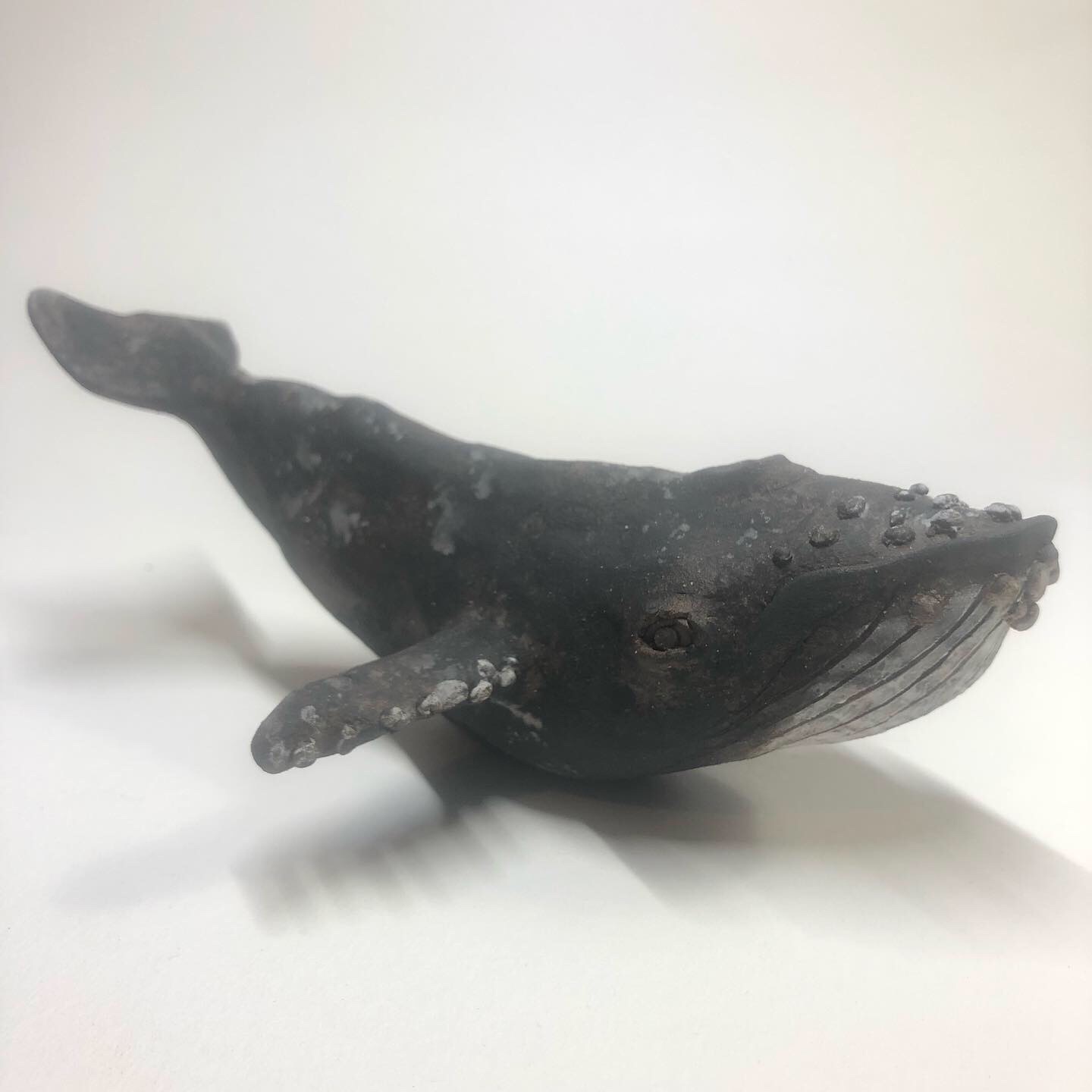Work by MARTHA WILLETTE LEWIS, Curated by JEFF BERGMAN
Our relationship with maps has changed drastically in the last ten years, from the pinpoint ease of Google Maps to global positioning systems rendering us a blinking blue beacon on a grid of streets. Rarely are we explorers in the completed cartography of our planet. Visual artist Martha Willette Lewis has given us new, unreal spaces to explore by combining diagrammatic drawings, biological systems, and topographical forms. These spaces manifest as works on paper that are often folded, crumpled, or bisected. Lewis takes visual cues from systems that are usually not in contact and, in doing so, creates a skewed sense of reality. Hers is a hybridized vision shared by artists and technological innovators. The paper and drawing are real, but the vision is of an impossible place.
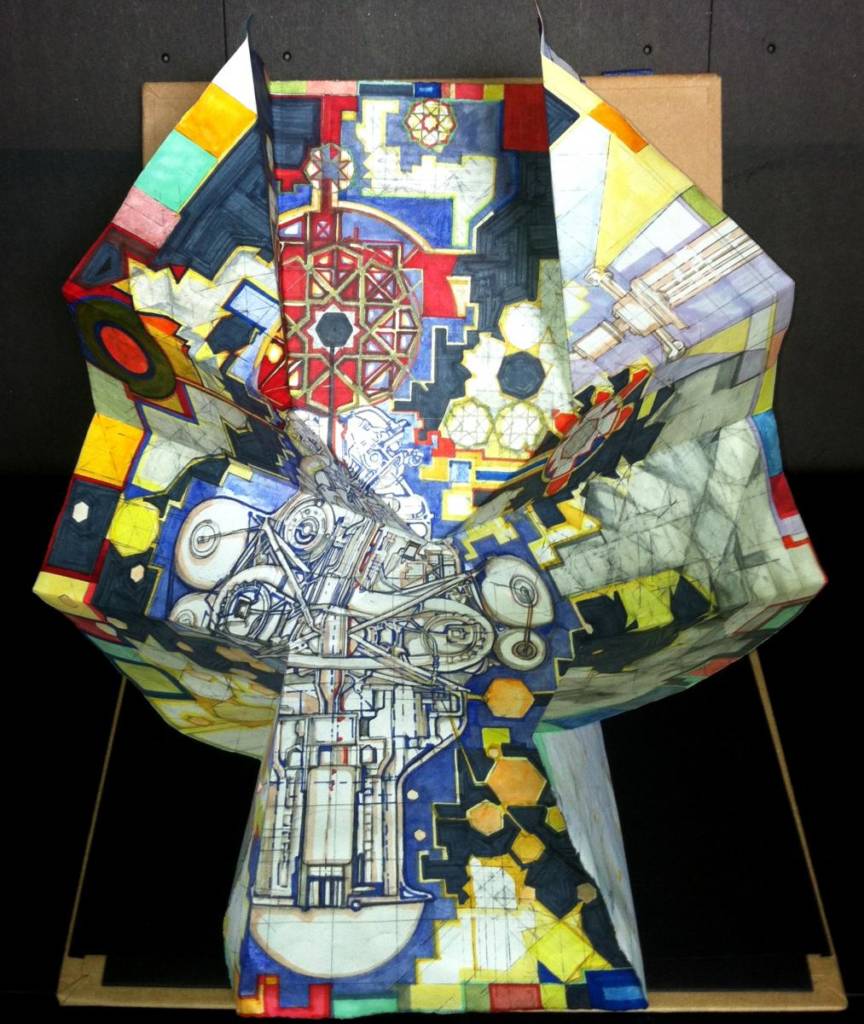
Folded Stellar Hive, 2013
Pencil and India ink on paper and cardboard housing
12x18x7 unfolded
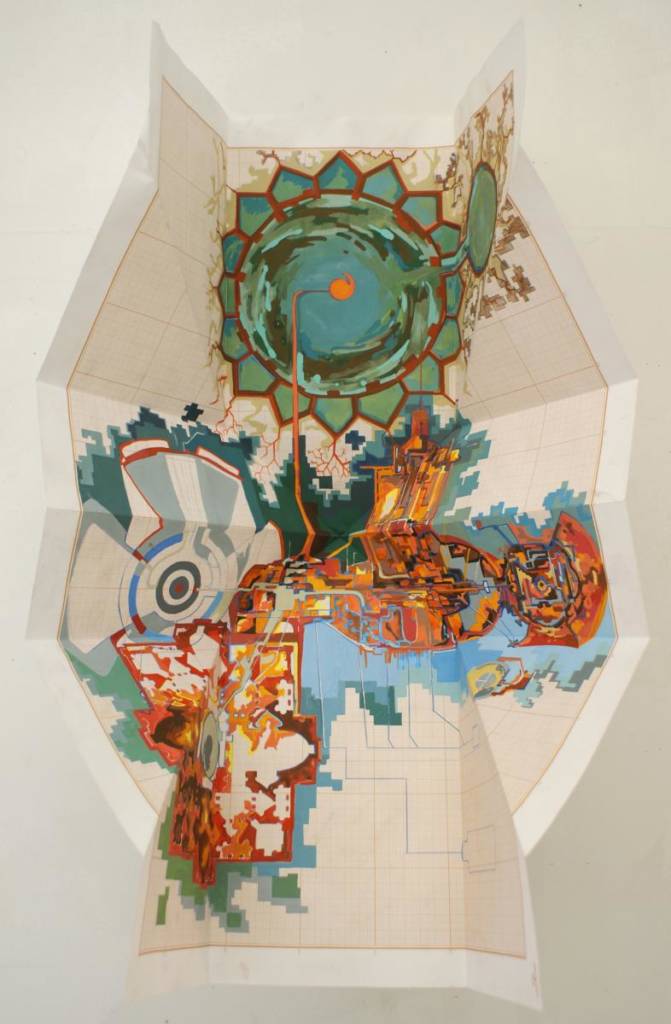
Elemental Reasoning and Limited Resources, 2013
Pencil and India ink on paper and cardboard housing
unfolded approx
20.5 x 30 x 7 inches
Lewis provides a constructed topography for her unreal spaces. One folded work invoking a map, “Folded Stellar Hive, 2013,” lives as a three-dimensional form. The drawing, like a common map, folds in on itself. In this work, Lewis builds a place for us out of things we recognize, but she creates an amalgam well beyond our possible range of experiences. Filled with color and disorder, the piece’s patterned perimeter begins to yield to the complex forms that mesh within. The geometric forms evoking the spiritual forms of mandalas and rose windows blossom across the paper to build the structure of a hive. In “Elemental Reasoning and Limited Resources, 2013,” ancient gothic vaults and swirling pools of deep space bleed into a pixelated grid. An architect or an engineer could attempt to read this as a technical drawing, as it appears factual, and is based on facts, but the result is fiction.
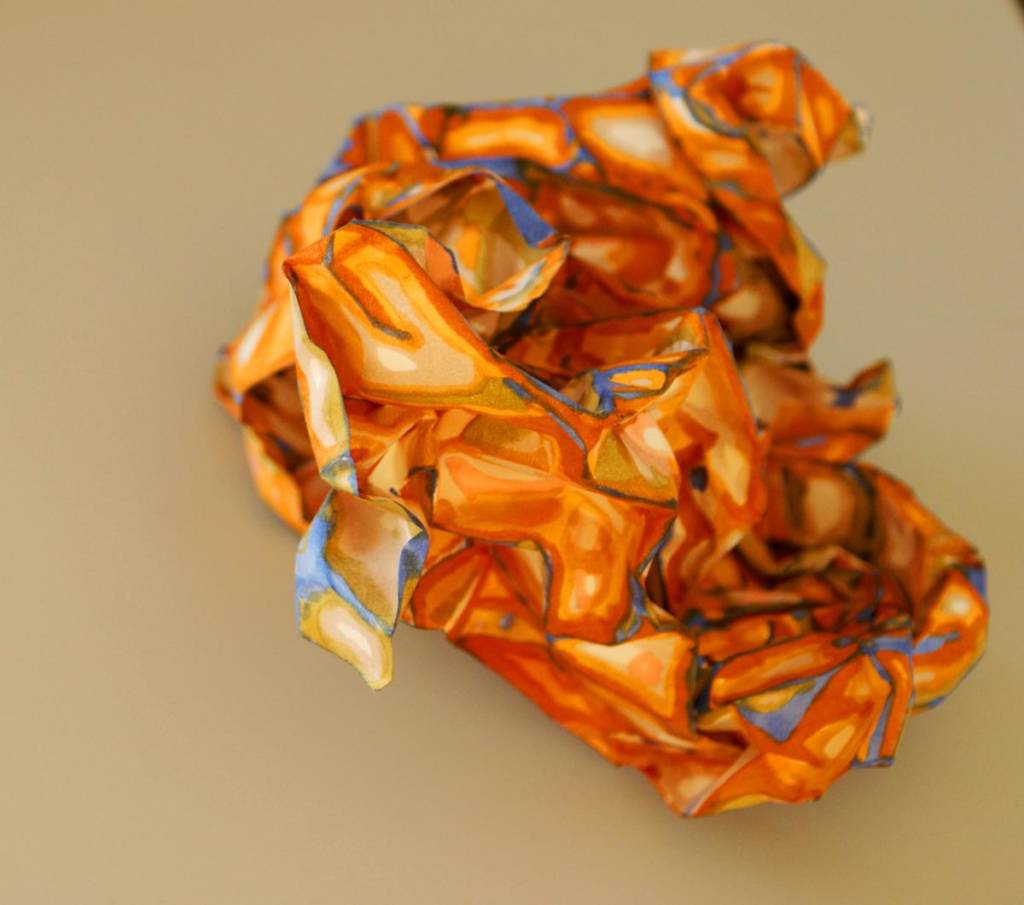
Brane 3, 2013
India ink on crumpled paper
4x3x4
Lewis also creates topographies in painted, crumpled paper. The complexity of these crumpled forms expand imagined space by giving them dimension. Lewis embraces the paper’s weight and volume, and the work’s objectness becomes a physical presence greater than the viewer thought possible for paper alone. Lewis’s works are worlds within worlds and exist as their own tiny satellites.. In “Brane 3, 2013,” the painted crumpled paper form could be a landmass, a brain, the physical cosmology of our universe, or an abstract object. Lewis, a polyglot of various disciplines, intends it to be as all of these.
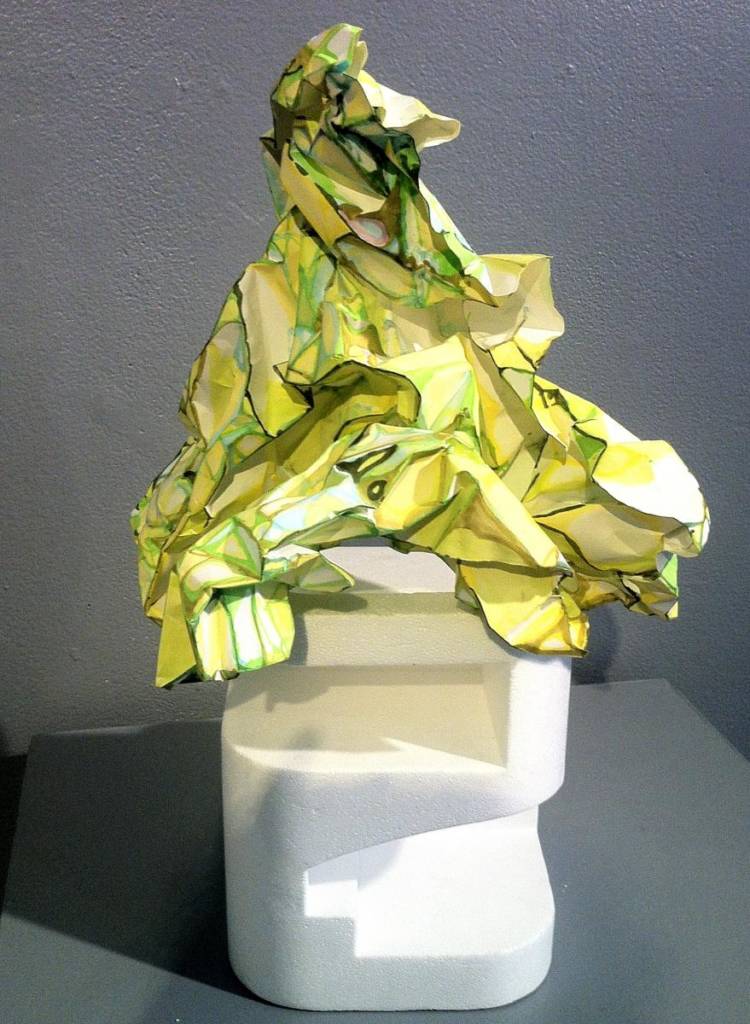
Membrane, 2013
Ink on crumpled paper on styrofoam plinth
9x10x7
Like maps, Lewis’s works are compiled into an atlas, but one that is unreal. Her forms evoke charts, diagrams, and maps but often comingle their unlike disciplines. Rather than direct the viewer to a known destination, this unreal atlas delves into the land of exquisite variability.
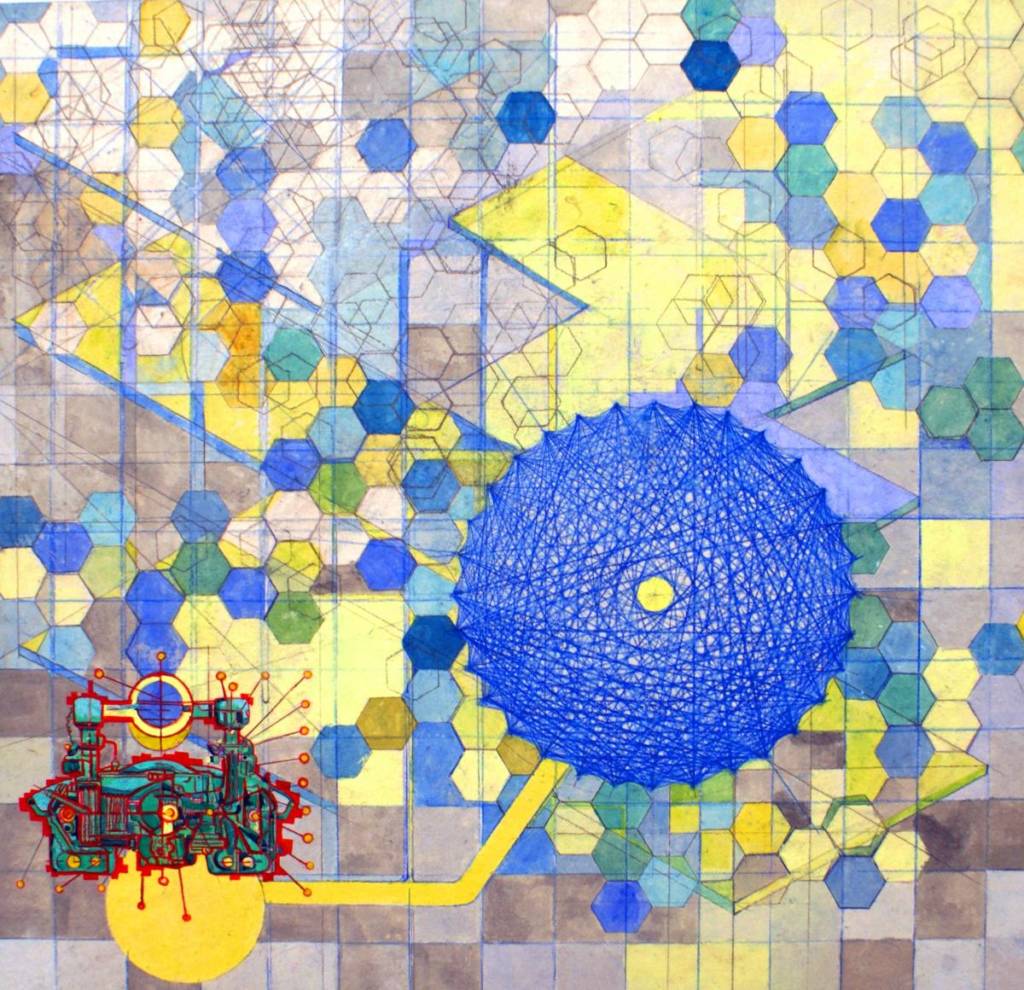
hive 3, 2013
watercolor and pencil on mulberry paper mounted on panels,
20x20x1
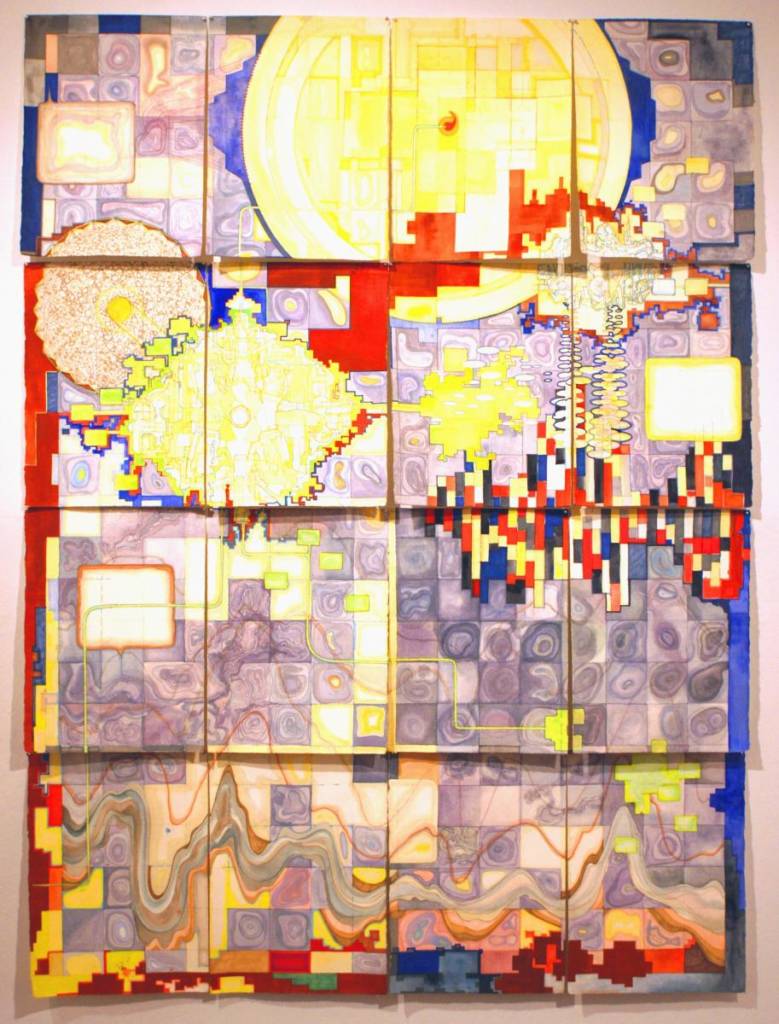
Untitled world, 2012
Watercolor, marker, pencil on cut leaves of paper,
4ft x 5ft
Martha Willette Lewis earned her BFA from the Cooper Union in New York, and an MFA from Yale University. Her art engages issues of science, technology, and archived human knowledge. www.marthalewis.com
Jeff Bergman is currently Associate Director at Pace Prints in Manhattan. He earned his BA from Hampshire College, where he studied art history and theory. He is the editor of a weekly art newsletter called Atlas.


